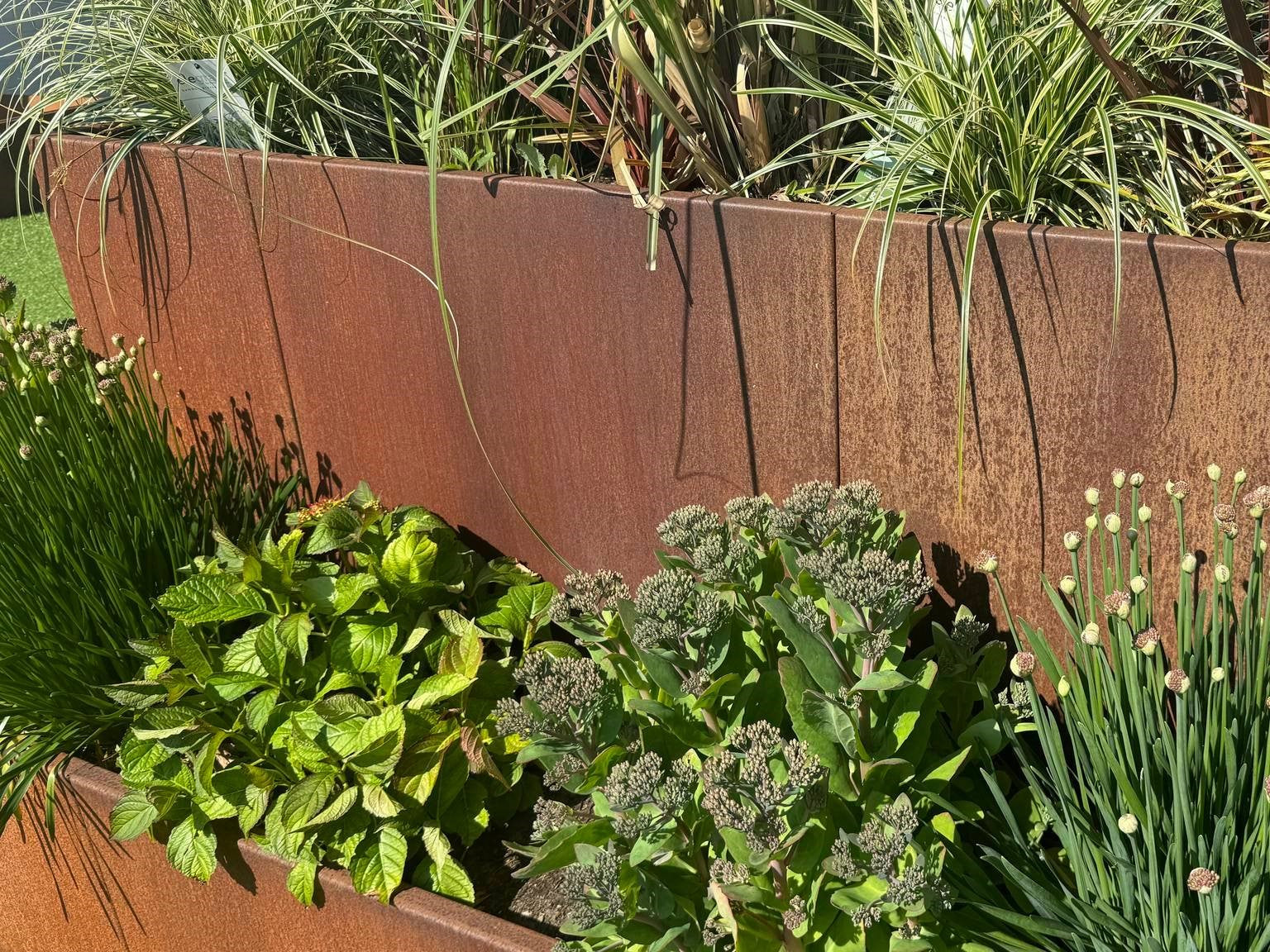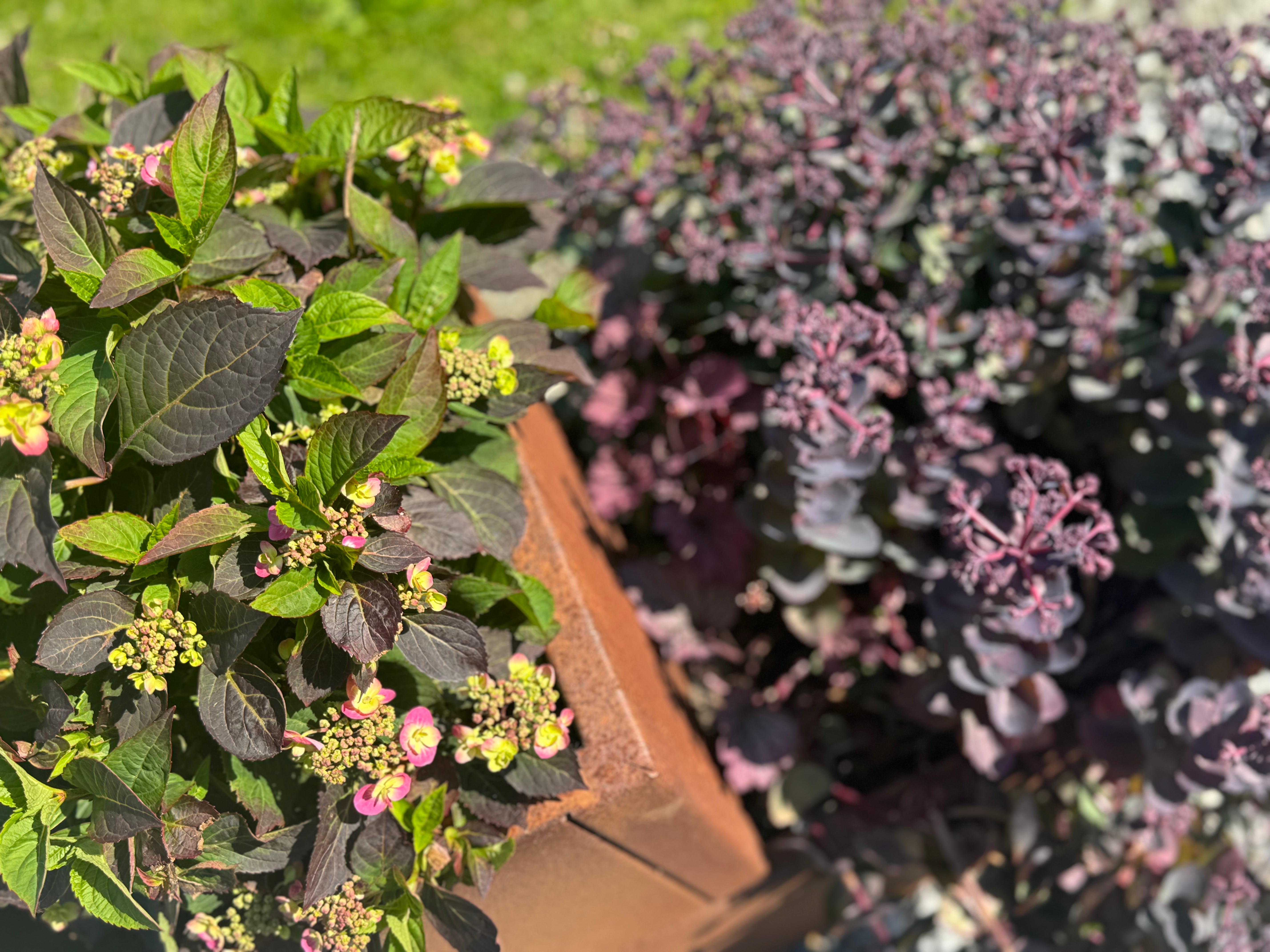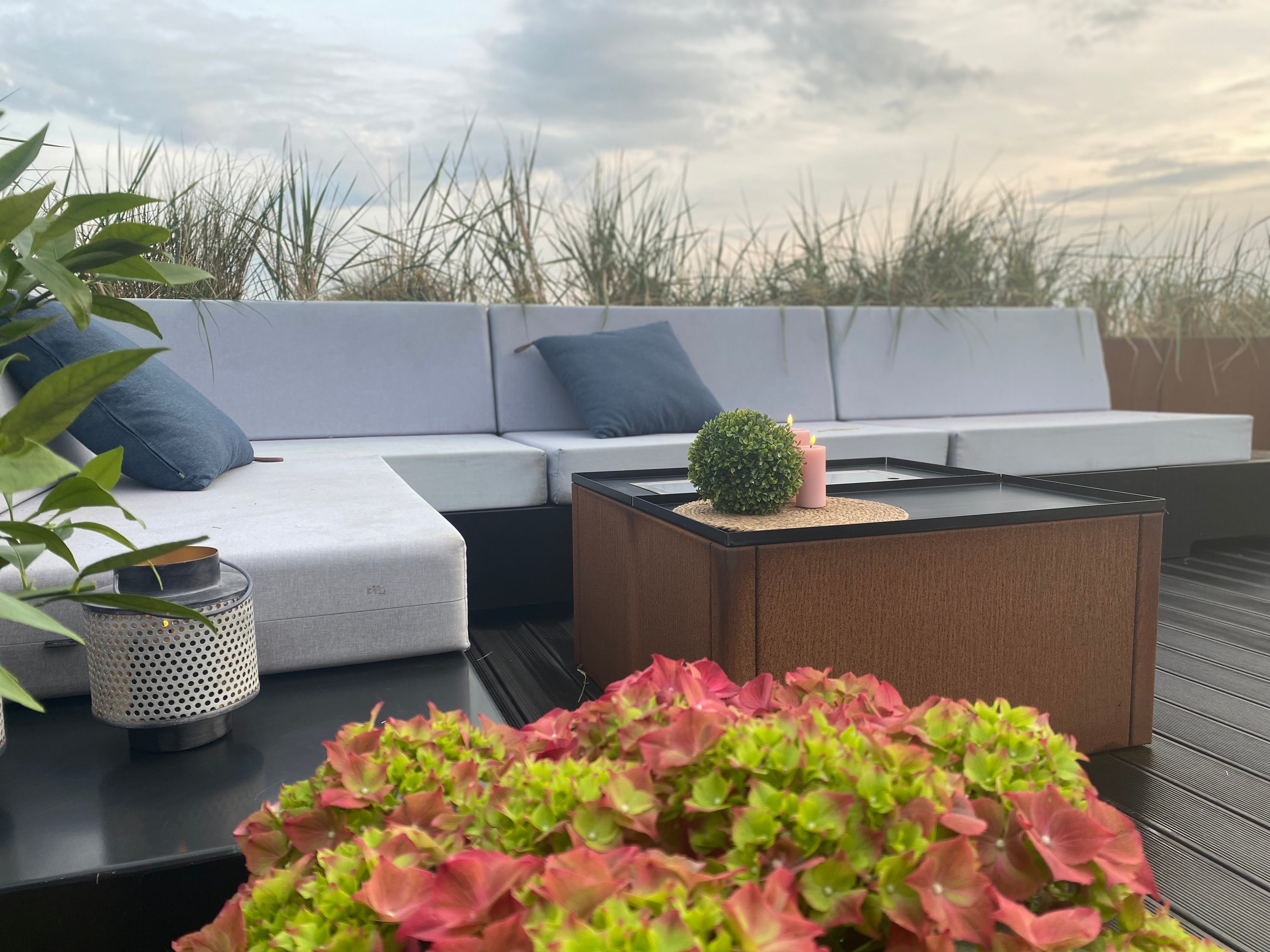Plant in multiple levels
Multi-level planting is a great way to optimise the space in your garden. By using planters of different heights or creating multiple levels with retaining walls, you can create a beautiful and dynamic garden that is both practical and beautiful.
Benefits of multi-level planting
1. Utilise the space
By planting in multiple levels, you can utilise both the horizontal and vertical space in your garden. This is especially useful in smaller gardens, where space is limited.
2. Better soil drainage
Planter boxes and raised beds provide better drainage, which can be beneficial for many plants.
3. Ergonomic height
Higher planter boxes make it easier to reach the plants without having to bend down too much.

Multi-level planter boxes
By combining CUBY planter boxes in heights of 40 cm and 80 cm, you can easily create multiple levels in your garden. These modular planters are perfect for creating a dynamic and structured garden where different plants can thrive in their optimal growing conditions. The lower 40 cm boxes are ideal for herbs, salads and low-growing flowers, while the higher 80 cm boxes are perfect for deeper-rooted plants like tomatoes, shrubs and larger vegetables.

Multi-level retaining walls
If you have a sloping garden or a garden with slopes, retaining walls can help create multiple levels in the garden.
Start by drawing a plan of how you want your levels to look. Consider sunlight, water drainage and access when planning the location of your retaining walls. Once your retaining walls are in place, you can fill the levels with soil and start planting. Remember to choose plants that thrive in the light and soil conditions found on the different levels.
Unique expression
Multi-level planting can transform your garden into a lush and well-organised oasis. Whether you choose planters or retaining walls, you can achieve both an aesthetic and functional expression. Start small, plan carefully and enjoy the process of creating your own unique garden experience🌿


